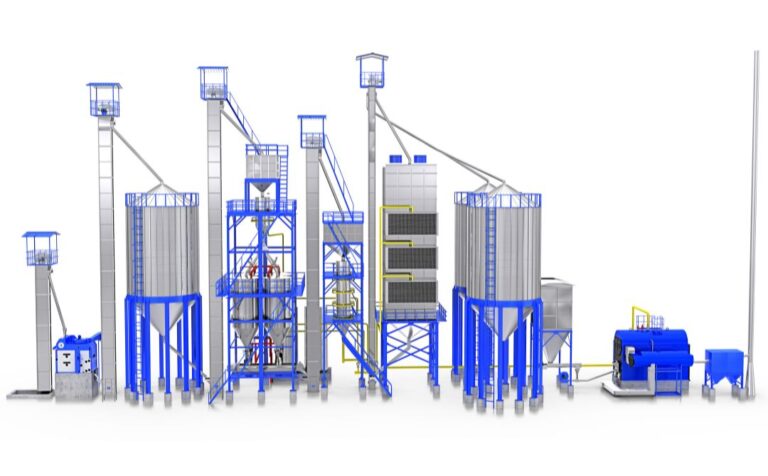Table of Contents
The Indian water crisis looms large, with over 600 million people facing water scarcity and a significant portion of surface water contaminated.
Amidst this challenge, water management offers a beacon of hope, transforming used water into a valuable resource. For urban planners, rural leaders, and businesses, embracing recycled water and effluent treatment plants (ETPs) can save ₹50,000-₹10 lakh annually while ensuring sustainability.
This blog explores how wastewater integration unlocks water crisis solutions, highlighting urban water planning, rural water benefits, and practical steps to align with Indian water policy for a water-secure future.
The Urgent Call for Water Sustainability in India
India’s water demand is staggering, 1,100 billion cubic meters annually which is projected to double by 2030. Urban areas generate 72,000 million litres of wastewater daily, while rural regions struggle with limited access to clean water.
Untreated sewage pollutes rivers, exacerbates the India water crisis, and risks fines of ₹50,000-₹5 lakh for non-compliance with environmental norms. Water management in India through wastewater treatment via STP implementation and ETPs can reclaim 30-50% of this water for reuse in irrigation, industrial cooling, or flushing, saving ₹1-5 lakh per 100 KLD (kilolitres per day).
By integrating recycled water into urban and rural systems, communities can reduce freshwater dependency and align with Indian water policy goals like the National Water Mission. Let’s delve into how wastewater integration drives sustainability.
Why Wastewater Management Matters
Wastewater integration is a cornerstone of water sustainability, offering multiple benefits:
- Reduces Freshwater Demand: Reusing 30-50% of treated water (e.g., 30,000 litres daily for a 100 KLD plant) saves ₹50,000-₹2 lakh yearly on water bills.
- Prevents Pollution: Treating sewage via effluent treatment plants cuts river contamination by 85-90% (BOD reduced to <30 mg/L), meeting Central Pollution Control Board (CPCB) norms.
- Supports Rural Access: Rural water supply improves with low-cost treatment, serving 50-100 households per 10 KLD plant.
- Boosts Economic Value: Treated water for agriculture or industry adds ₹1-5 lakh per 100 KLD in productivity.
You might also like: How ETP Wastewater Treatment Systems Work
How Wastewater Management Works in India
Water management in India leverages effluent treatment plants (ETPs) and Sewage Treatment Plants (STPs) to treat wastewater:
- Preliminary Treatment: Screens remove debris (50-100 kilograms daily for 100 KLD), protecting equipment.
- Primary Treatment: Sedimentation and coagulation settle solids, reducing turbidity.
- Secondary Treatment: Biological processes (e.g., MBBR) use microbes to cut BOD by 85-90%.
- Tertiary Treatment: UV or reverse osmosis ensures water is safe for reuse or discharge (COD <250 mg/L).
- Sludge Management: Dewatering yields 100-200 kilograms of sludge daily, reusable as fertilizer.
Treated water is reused for non-potable purposes, aligning with Indian water policy.
Applications of Wastewater Management
Wastewater integration serves diverse sectors:
- Urban Areas: Urban water planning uses STPs for apartments or offices, reusing 30-50% water for flushing or landscaping.
- Rural Communities: Low-cost wastewater treatment solutions in India like anaerobic baffled reactors treat village sewage for irrigation, serving 50-100 households.
- Industries: ETPs treat chemical or textile effluents, enabling 20-40% reuse and avoiding ₹1-5 lakh fines.
- Agriculture: Treated water irrigates crops, boosting yields by 10-20% and saving ₹50,000-₹1 lakh per hectare.
These benefits of decentralized wastewater treatment in India highlight its versatility.
Best practices for wastewater reuse in Indian cities ensure efficiency:
- Decentralized Systems: Small STPs (10-50 KLD) at apartments or clusters reduce transport costs by ₹50,000 yearly.
- Automation: Smart sensors monitor BOD/pH, cutting errors and ensuring CPCB compliance.
- Community Engagement: Educate residents (₹10,000 campaigns) on recycled water benefits to boost acceptance.
- Dual Plumbing: Install pipes for reuse in flushing or gardening, saving ₹50,000-₹2 lakh yearly.
- Regular Maintenance: Budget ₹50,000-₹2 lakh yearly for checks to avoid breakdowns.
You might also like: Understanding AABR Technology in STP Wastewater Plants
Challenges and Solutions
Implementing water crisis solutions faces hurdles:
- High Costs: ₹5-50 lakh for STPs/ETPs strains budgets.
- Solution: Start with low-cost wastewater treatment solutions in India like anaerobic systems.
- Space Constraints: Urban areas lack room.
- Solution: Use compact MBBR STPs (5-10 sq. meters).
- Public Resistance: Concerns over recycled water safety.
- Solution: Conduct awareness drives and share test reports.
- Maintenance Skills: Requires trained staff.
- Solution: Train operators for STP implementation.
Steps to Implement Wastewater Management
Ready for water management in India? Follow these steps:
- Assess Needs: Calculate wastewater output (e.g., 50 KLD for 100 flats, 300-400 litres per person).
- Choose Technology: Opt for MBBR STPs or ETPs for effluent treatment plants.
- Select Vendors: Partner with BIS/CPCB-certified suppliers like SKF Elixer for STP implementation.
- Budget: Plan ₹5-50 lakh for setup, ₹50,000-₹2 lakh yearly maintenance.
- Plan Reuse: Target 30-50% reuse for flushing or irrigation, saving ₹50,000-₹2 lakh yearly.
- Engage Community: Educate stakeholders on recycled water benefits.
Conclusion
Wastewater integration is a powerful solution to the India water crisis, turning sewage into recycled water for urban and rural water sustainability. Through effluent treatment plants and STP implementation, communities and industries can save ₹50,000-₹10 lakh yearly, meet Indian water policy goals, and protect ecosystems.
Best practices for wastewater reuse in Indian cities like decentralization and automation ensure efficiency and compliance. For cutting-edge solutions, SKF Elixer India Pvt. Ltd. offers advanced STPs and ETPs, delivering 85-90% BOD reduction and 30-50% reuse.
Contact SKF Elixer today to secure your water future with their proven water crisis solutions.
FAQs
Q1: What are urban India wastewater reuse success stories?
Apartment complexes and malls using STPs reuse 30-50% water for flushing or landscaping, saving ₹50,000-₹2 lakh yearly, per urban India wastewater reuse success stories.
Q2: What are the benefits of decentralized wastewater treatment in India?
Small STPs (10-50 KLD) reduce transport costs, enable local reuse, and suit urban water planning, saving ₹50,000-₹1 lakh yearly.
Q3: What are low-cost wastewater treatment solutions in India?
Anaerobic baffled reactors (₹1-10 lakh for 10 KLD) treat sewage for irrigation, ideal for rural water and small communities.
Q4: What are best practices for wastewater reuse in Indian cities?
Use decentralized STPs, automation, dual plumbing, and community education for efficient recycled water use.
Q5: How does wastewater management align with Indian water policy?
Wastewater integration via effluent treatment plants supports National Water Mission goals, reducing freshwater demand and pollution, ensuring water management in India.
Good reads are meant to be shared









